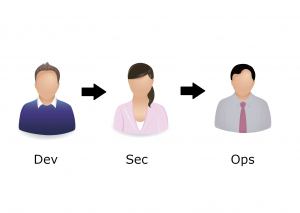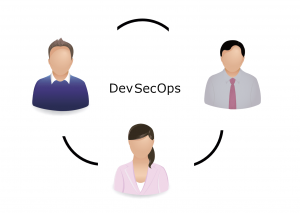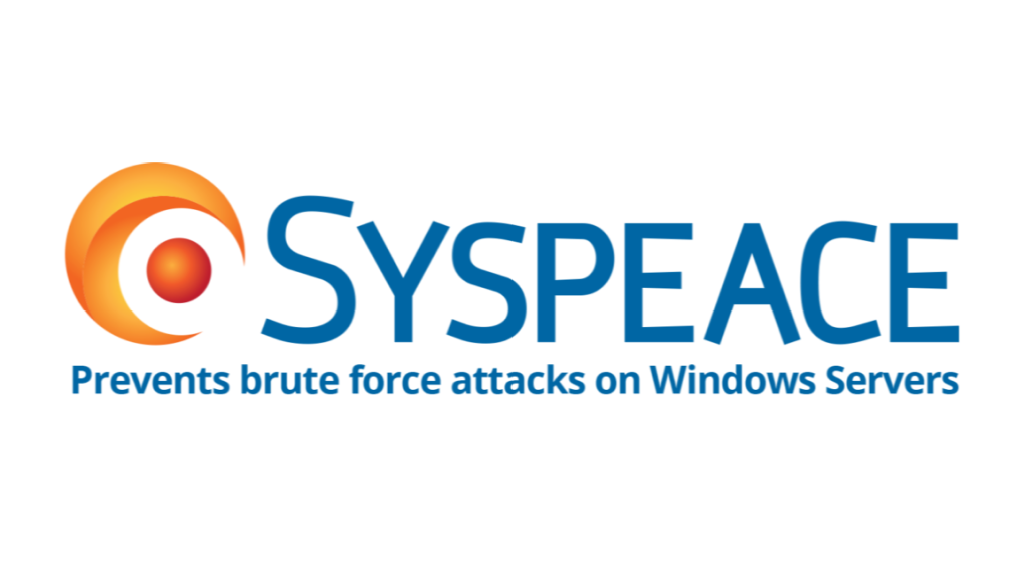DevSecOps – Where Collaboration is key
We hear many people talk about DevOps and SecOps. The DevOps wants to develop a strategy that bridges the gap between software development and IT operations. The team works with design, development, testing, implementation or deployment and maintenance. Security is normally introduced in the later stages. Somewhere between testing and deployment or even later.
But SecOps is all about making sure to introduce aspects around security much earlier. It is a collaboration between security and operations teams, just like development and operations teams collaborate on DevOps front. SecOps work with a set of practices that organizations need to follow and tools they need to use to ensure the security of their application environment. All this to make sure the organizations work together to meet shared goals and keep the organization secure. But what if we combine these two?

VS

First version (seperated) VS new version (DevSecOps)
Some claim that SecOps and DevOps should be combined. Others argue that DevOps only exists for large enterprises and that the term DevOps is enough. A combined approach of both SecOps and DevOps can work great — as long as the focus of security and collaboration is in place from the outset of a project.
DevSecOps: Integrating SecOps and DevOps
This has led some to coin the term “DevSecOps” to emphasize the need to build a security foundation into DevOps initiatives. With SecOps and DevOps understood, defining DevSecOps becomes easy. Simply put: DevSecOps is the integration of SecOps and DevOps.
DevSecOps means thinking about application and infrastructure security from the start. It also means automating some security gates to keep the DevOps workflow from slowing down.
If you think about it, this is really a natural evolution of the DevOps philosophy that focuses on collaboration. Integrating all stakeholders into the development pipeline makes the final product better.
Towards a DevSecOps environment
DevSecOps takes DevOps one step further. Developers should not build something and “throw it over the wall” to operations. Both developers and operations staff should understand that security is not an external concern. It is their responsibility. And they are often the best suited to solve security issues. Given enough knowledge, context, and assistance from security teams.
DevSecOps highlights the need to invite security teams at the outset of DevOps initiatives to build in information security and set a plan for security automation.
It also underscores the need to help developers code with security in mind. A process that involves security teams sharing visibility, feedback, and insights on known threats. It’s possible this can include new security training for developers too. Since it hasn’t always been a focus in more traditional application development.
Benefits of a DevSecOps approach
Security protocols that are baked into the development process is better, rather than added as a “layer on top”. It will allow DevOps and security professionals to harness the power of agile methodologies. And together as a team, without short circuiting the goal of creating secure code.
More benefits of a DevSecOps Approach:
- Greater speed and agility for security teams
- An ability to respond to change and needs rapidly
- Better collaboration and communication among teams
- More opportunities for automated builds and quality assurance testing
- Early identification of vulnerabilities in code
- Team member assets are freed to work on high-value work
6 important components
It is important to view security teams as a valuable asset that help prevent slowdowns. For example, early detection of a poorly designed application. That will save valuable time, resources, and costs.
Here are six important components of a DevSecOps approach:
- Code analysis – deliver code in small chunks so vulnerabilities can be identified quickly.
- Change management – increase speed and efficiency by allowing anyone to submit changes, then determine whether the change is good or bad.
- Compliance monitoring – be ready for an audit at any time (which means being in a constant state of compliance, including gathering evidence of GDPR compliance, PCI compliance, etc.).
- Threat investigation – identify potential emerging threats with each code update and be able to respond quickly.
- Vulnerability assessment – identify new vulnerabilities with code analysis, then analyze how quickly they are being responded to and patched.
- Security training – train software and IT engineers with guidelines for set routines.
The mindset
The purpose and intent of DevSecOps is to build on the mindset that “everyone is responsible for security“. With the goal of safely distributing security decisions.
And DevSecOps as a mindset and security transformation further lends itself towards cooperation with other security changes. It doesn’t matter if you believe that security needs to be added into Development or Operations or some other business process. Security needs to be added to all business processes. It has to have a dedicated team that needs to be created to establish an understanding of the business and make it secure.




